Volume 22, Issue 2
Displaying 1-6 of 6 articles from this issue
- |<
- <
- 1
- >
- >|
-
1973 Volume 22 Issue 2 Pages 51-60
Published: March 25, 1973
Released on J-STAGE: January 29, 2010
Download PDF (800K) -
1973 Volume 22 Issue 2 Pages 61-70
Published: March 25, 1973
Released on J-STAGE: January 29, 2010
Download PDF (914K) -
1973 Volume 22 Issue 2 Pages 71-81
Published: March 25, 1973
Released on J-STAGE: January 29, 2010
Download PDF (991K) -
1973 Volume 22 Issue 2 Pages 83-86
Published: March 25, 1973
Released on J-STAGE: January 29, 2010
Download PDF (344K) -
1973 Volume 22 Issue 2 Pages 87-99
Published: March 25, 1973
Released on J-STAGE: January 29, 2010
Download PDF (1318K) -
1973 Volume 22 Issue 2 Pages 101
Published: 1973
Released on J-STAGE: October 14, 2009
Download PDF (63K)
- |<
- <
- 1
- >
- >|
